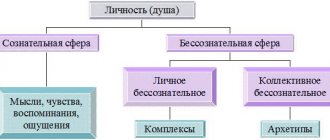This article was written based on the report of the President of the Moscow Gestalt Institute D. Khlomov. Let's consider the main provisions of this model. The note will be of interest not only to people who are interested in studying practical psychology, but also to clients. It can be assumed that the higher the level of awareness of a person, the more successful and happier he is. One of the goals of a psychological session is to improve the quality of life. The more we know about the mechanisms that influence this, the higher our chances of getting what we want.
Kaplan and Sadok
Definition
Borderline states are characterized by extremely unstable affect, mood, behavior, object connections, and self-image.
Clinical characteristics
Certain psychotic episodes may occur. There may be depression or complaints of lack of feelings. The behavior is extremely unpredictable. The unhealthy nature of their lives is reflected in their repeated acts of self-destruction. They are restless in their interpersonal relationships. They can be highly dependent on those with whom they want to be close, and tend to unleash anger on their friends when in a state of frustration. They destroy interpersonal relationships by placing everyone in the category of either “good in everything” or “bad in everything.” They cannot bear loneliness. They often complain of a chronic feeling of emptiness and boredom, and a lack of a stable sense of authenticity.
In clinical studies, abnormalities were found only on unstructured projective tests.
Course and prognosis
There is no tendency to progress towards schizophrenia, but severe depressive disorders are common in these patients.
Differential diagnosis
With this understanding, difficulties arise in differential diagnosis, for example, with hysterical and antisocial personalities.
Treatment
Such patients easily experience regression because they play on their impulses and find a slight transference, labile or fixed, negative or positive, which is difficult to analyze. A reality-oriented approach suits them better than deep unconscious interpretations. Placing the patient in special supportive institutions has a good effect.
Authors such as Nancy McWilliams and Otto Kernbeg do not consider borderline personality disorder (hereinafter BPD) as such. For them, “making a structural diagnosis” and “identifying the level of personality functioning” is more important. In their model, any single personality disorder (PD) can be a disorder at the neurotic, borderline, or psychotic level. In Kaplan and Sadok’s version, PD still belongs to the neurotic spectrum, and PD bordering on psychosis will be Borderline PD.
O. Kernberg and N. McWilliams use special diagnostic methods. Both authors distinguish psychotic, borderline and neurotic levels of personal organization. And I would like to elaborate on what criteria they use to separate these levels.
Classification of personality psychotypes depending on temperament
Most often, a personality typology is compiled based on differences in the temperaments and characters of people.
- HIPPOCRATES
The first known typology of personality depending on the type of temperament was proposed by the ancient Greek physician Hippocrates. It still remains relevant and popular, although the scientist did not individually connect typological personality traits with the properties of the nervous system (as is customary now).
A person’s psychotype according to Hippocrates depends on the ratio of various fluids in the body: blood, lymph and two types of bile.
Psychological types of temperament according to Hippocrates:
- phlegmatic - a person in whose body lymph (phlegm) predominates, which makes him calm and slow;
- melancholic - a person in whose body black bile (melanchole) predominates, which makes him fearful and prone to sadness;
- sanguine - a person who has a lot of blood in his body (sanguine), active and cheerful;
- choleric is hot and impulsive; there is a lot of yellow bile (chole) in his body.
For many centuries in a row, the doctrine of temperaments has been developed and supplemented. In particular, the German philosopher I. Kant and the Russian physiologist I. P. Pavlov were engaged in this. Today, the names of the types of temperament remain the same, but the essence has changed.
Temperament is a combination of innate characteristics of higher nervous activity. It depends on the speed and strength of the processes of excitation and inhibition in the brain. Thus, a weak type of higher nervous activity corresponds to the temperament of a melancholic person; strong, balanced, but inert – phlegmatic; choleric – strong and unbalanced; strong, balanced and agile - sanguine.
- E. KRETCHMER
At the beginning of the twentieth century, German psychiatrist E. Kretschmer identified various personality types depending on character. This was the first character classification. Kretschmer connected a person’s psychotype with the constitution of his body.
Three types of bodily constitution:
- Asthenic. Thin and tall people, they have elongated arms and legs, underdeveloped muscles.
- Athletic. People are strong, with well-developed muscles, average or above average height.
- Picnic. People who tend to be overweight with underdeveloped muscles and musculoskeletal system, of average or short stature.
Since E. Kretschmer was a psychiatrist, he compared personality psychotypes with a tendency towards one or another psychopathology and grouped them into two personality types:
- Schizothymics are mentally healthy people with an athletic or asthenic build, vaguely reminiscent of patients with schizophrenia. They are characterized by the following character traits: artistry, sensitivity, aloofness, selfishness, and authority.
- Cyclothymics are mentally healthy people with a picnic build, reminiscent of patients with manic-depressive psychosis. These are cheerful, optimistic, sociable, frivolous people.
E. Kretschmer's theory was based only on his personal observations, but served as the basis for subsequent, more complex character typologies. Much later, scientists came to the conclusion that body shape really influences the character and individual typological characteristics of a person. The connection between the constitution of the body and the tendency to accentuate character (an extreme degree of normal functioning of the psyche) and psychopathology does exist.
O. Kernberg
Differentiation criteria:
- degree of identity integration
- level of functioning of defense mechanisms
- reality testing
Neurotic level
Integrated identity. Holistic self-concept and holistic images of significant others. In some cases, a borderline narcissistic personality may have a self-concept that is holistic, pathological, and possesses traits of grandiosity. At the same time, there is insufficient integration of the concept of significant others.
Border level
Diffuse identity. Primitive protective furs (mainly splitting). Capable of testing reality. Interpretation of primitive defense mechanisms, as well as confrontation and clarification, temporarily increases the level of functioning. May feel empathy for the therapist's “confusion” and use new data obtained constructively later in the interview. Capable of introspection and insight regarding the reasons for their contradictory behavior. The ego boundary is established (there is a clear barrier between self and other), but there is a clear dissociation between the “good” and “bad” Self and object representations, which protects love and the “good” from being destroyed by the overwhelming hatred and “bad”.
Such patients tend to confuse information about their past with their current difficulties.
Psychotic level
Primitive protective furs (mainly splitting). Inability to test reality. Interpretation of primitive defense mechanisms leads to even greater disorganization. Ego boundaries are fragile or absent.
Nancy McWilliams
Differentiation criteria:
- preferred defenses
- level of identity integration
- reality testing + the ability to observe your pathology
- nature of the main conflicts
- Features of transference and countertransference
Neurotic level of personality organization
- rely on mature, secondary defenses; primary defenses are used either “invisibly” against the general background, or during decompensation.
- integrated sense of identity. Their behavior has some consistency, and their inner experience is characterized by the continuity of their own self over time
- reality testing; early demonstrate the ability to “therapeutically split” into the observing and feeling parts of their own “I”. They do not require the therapist to explicitly confirm his neurotic way of perceiving.
- such patients seek therapy not because of problems related to safety or ideas of influence, but because they are involved in conflicts between their desires and those obstacles that they suspect are their own doing
- whatever the therapist’s transference sign, it will not be excessive; a client of a neurotic level does not evoke in the listener either a desire to kill or a compulsive desire for salvation.
Borderline level of personality organization
- Primitive defenses: denial, projective identification, splitting. Prone to hostile defense: “How can anyone know what to do with this crap?”
- Their self-image is full of contradictions and discontinuities. When asked to describe their own personality, they have difficulty and are usually hostile when it comes to their identity. But unlike psychotics, they do not have existential horror about their existence.
- capable of testing reality, lack of observing ego.
- separation-individuation problems, when they feel close to another person, they panic due to fear of absorption and total control; outside of intimacy they feel abandoned.
- the therapist is perceived as either completely bad or completely good; countertransferences are often strong and unbalancing. The therapist may feel like a stressed-out mother of a two-year-old who doesn't want help but becomes irritable when she doesn't get it.
Psychotic level of personality organization
- Defenses used by psychotic individuals: withdrawal into fantasy, denial, total control, primitive idealization and devaluation, primitive forms of projection and introjection, splitting and dissociation.
- Have serious difficulties with identification, so much so that they are not completely sure of their own existence. They are deeply confused about who they are. These patients typically grapple with important issues of self-determination such as body concept, age, gender, and sexual orientation. “How do I know who I am and that I exist?”
- Lack of reality testing. Interpret reality with highly individualized meaning. They are unable to temporarily distance themselves from their problems and treat them dispassionately. Unable to observe themselves from the outside (lack of an observing ego). Although sometimes they can say about themselves what others once said about them, and this may even look plausible at first glance. “They spend too much time struggling with existential dread and have little energy left to evaluate reality.”
- existential conflict - life or death, existence or destruction, safety or fear. They deeply doubt their right to exist as a separate person.
- countertransference is often positive, and parental protectionism is awakened. Patients are prone to primitive fusion and idealization of the therapist. They, like children, are delightful in their affection, but frightening in their helplessness and needs, straining the therapist's resources to the limit.
If we compare the classification criteria of the two authors, we can see that the first three points of Nancy McWilliams completely coincide with the assessment criteria of O. Kernberg. In addition to the criteria he has already described, Nancy McWilliams also examines the nature of conflicts and the characteristics of transference-countertransference.
Saenko Evgenia
One of the significant questions related to solving the problem of character and, accordingly, the degree of its violation, is on the basis of what criteria it could be assessed. Traditionally, in world literature, character has been defined as a system of personal characteristics, which includes 1) stable needs and motives, 2) volitional personality traits (commitment, determination, initiative, etc.), 3) stable emotional reactions. Stable motives and needs, volitional qualities of a person are meaningful properties of the psyche (according to V.M. Rusalov), and emotional reactions are formal-dynamic mental properties.
In psychoanalytic literature, the problem of character was considered from the point of view of 1) Freud's drive theory, where it was understood as the result of fixation of libido at a certain stage of development, and 2) from the position of ego psychology, which studies character as a set of certain defense mechanisms, i.e. ways to avoid anxiety. Modern approaches to diagnosing the nature and degree of personality disorders do not exclude what has already been done in Freud’s drive theory and ego psychology.
As one of the models of character and its diagnosis, you can use the theory proposed by N. McWilliams.
McWilliams determines the essence of character structure based on the use of two dimensions: 1) assessment of the level of development of personal organization (fixation, according to Freud), which reflects the level of individuation of the individual or the degree of pathology. McWilliams views development at four levels: psychotic, borderline, neurotic and normal; and 2) diagnosing a defensive personality style or character type (for example, paranoid, schizoid, depressive, etc.).
The McWilliams model arose after ordinary psychology ceased to look at the problem of character in an extremely simplified way. But this did not happen right away, and until this moment in everyday consciousness and even in science there was an opinion according to which people are divided into two large categories: sick (“crazy”) and healthy (“not crazy”). In the strict sense of the word, this approach practically did not require a differential diagnosis at all.
In this regard, diagnostics for a long time used a standard scheme for assessing the patient’s condition, which completely satisfied psychiatrists and psychotherapists. According to this scheme, people who more or less agree with others about what reality is can be classified as healthy, or normal. Those who avoid answering this question or give scattered contradictory information about reality should be classified as sick. Typically, people with hysterical states, phobias, obsessions, compulsions, manic or depressive tendencies were considered as patients with certain psychological difficulties. People with hallucinations, illusions and thought disorders were considered sick. Antisocial patients were classified as morally insane.
Until its appearance in the mid-twentieth century. In the “borderline” category, analysts distinguished between neurotic and psychotic levels of pathology, without using intermediate forms of personality disorder. The neurotic was characterized by a complete understanding of reality, believing that the problems he had were largely his own difficulties. Its basic feature is overly mechanical and inflexible psychological defenses. N. McWilliams metaphorically compares a neurotic to a boiling pot with a tightly closed lid. The psychotic is characterized by a loss of contact with reality and too weak defenses. If a neurotic believes that the problem lies in himself, then a psychotic has no doubt that something has happened to the world, and the threat comes from him. Continuing the metaphorical comparison, we can say that the psychotic is like a bubbling pot with a poorly closed lid, therefore, in order to ease his torment, you need to cover the lid and turn down the heat.
Already at the end of the 19th century. it has been observed that there are patients who occupy the "borderland", the area between apparent illness and health. In the middle of the twentieth century. ideas about an intermediate zone between neuroses and psychoses began to appear.
Helen Deutsch called them “as if individuals,” Hoch and Polatin introduced the category of “pseudoneurotic schizophrenia.” In 1953, Knight published an essay on borderline states, and in 1968, Grinker conducted research that provided the rationale for borderline syndrome.
In 1980, the term became commonly used and received some status in the third edition of DSM-III (Diagnostics and Statistics of Mental Disorders, or Third Edition of the Diagnostic and Statistical Manual of Mental Disorders). True, based on the explanations given in the DSM-III, it is not very clear whether to consider the borderline state as a personality type or as a level of pathology.
A feature of the selected group of patients was the absence of hallucinations or delusions, as in psychotics, but the presence of instability and unpredictability of behavior, as in neurotics. During psychoanalytic treatment, patients could become temporarily psychotic but remain stable outside the psychoanalytic process.
McWilliams argues that psychotic, borderline and neurotic are levels of personality development that correlate with E. Erikson’s stages of development. Thus, psychotics are people who have problems of the first stage of development according to Erikson, i.e. the problem of trust or mistrust, borderline individuals are fixed on the problem of separation/individuation, and neurotics are fixed on deeper levels of identification associated with the experience of guilt or initiative. Distinctions between the three levels of personality development can be made using a specific standardized patient interview procedure.
It consists of clarifying the following questions:
- preferred defenses;
- level of identity integration;
- adequacy of reality testing and the ability to observe one’s pathology;
- the nature of the main conflicts;
- features of transference and countertransference.
Following the same scheme, let us move on to the individual levels of personal organization: psychotic, borderline and neurotic.
13.2. Neurotic level of personality organization
The term "neurotic" is applied to relatively healthy people who have some difficulties associated with emotional disturbances. In the first stages of development - oral and anal - no serious character disturbances were observed. However, during the oedipal stage (3-6 years), problems arose that led to the organization of a neurotic structure. According to J. Bergeret (see Reader 13.2), depending on how problematic the development is at the teenage stage, the neurotically reorganized can form either a neurotically organized self and develop into neurosis, or a psychotically organized self and develop into psychosis.
Neurotics rely on more mature defenses, having the opportunity to update more primitive defense mechanisms. The presence of primitive defenses does not at all exclude the diagnosis of character structure at the neurotic level, but the absence of mature defenses excludes such a diagnosis. Neurotics use as mature ones - repression, intellectualization, rationalization, etc. defenses, as well as primitive ones - denial, projective identification, isolation, etc.
They have an integrated sense of identity, i.e. are able to describe themselves without experiencing difficulties in determining their character traits, preferences, interests, temperamental characteristics, strengths and weaknesses. Neurotics are also good at describing other people.
Neurotics are in reliable contact with reality, they do not have hallucinations, manic interpretations of experience, they live in the same world as the psychotherapist. Some part of his ego, which worries the patient, and about which he turned to a psychotherapist, is considered by him detachedly. She is ego-dystonic. Thus, a neurotic-level paranoid person will believe that her suspicions come from her internal predisposition to perceive other people as hostile and aggressive. Paranoid borderline or psychotic patients believe that their difficulties are external and determined by the characteristics of the world around them, how painful and disturbed it is.
The nature of the difficulties lies not in the problem of security or attachment, but in the formation of identity and initiative. This is the problem of the Oedipus stage of development according to Erikson. Triadic object relations are typical for neurotics.
A neurotic personality is able to adequately perceive the interpretation of defenses and transference, therefore, when working with people of a neurotic character, psychotherapists use intensive analysis, which includes the disclosure of feelings of conflict, defenses and interpretation of transference.
13.3. Borderline level of personality organization
People at this level occupy an intermediate position between neurotics and psychotics. They are distinguished by some temporary stability compared to the second and a violation of stability compared to the first. According to J. Bergeret, the border structure is formed due to the fact that during childhood the child received an injury, which led to the organization of the border structure (see Reader 13.2).
Borderlines use primitive defense mechanisms, so they are sometimes difficult to distinguish from psychotics. The important difference is that when the conversation is properly structured, they may show a temporary ability to respond to the interpretations that the therapist makes.
In the sphere of identity integration, the borderline personality exhibits contradictions and breaks in the self. When describing themselves, they experience difficulties and are prone to hostile defense and aggression. However, self-exploration is not accompanied (as in psychotics) by a feeling of existential dread and fear. Rather, they may be accompanied by hostility. According to the criteria of ego identity and typical defenses, the borderline personality is more similar to a psychotic than to a neurotic character organization.
When properly structured, borderline clients demonstrate an understanding of reality, thereby distinguishing themselves from psychotics; able to observe their pathology. The main problem is the ambivalence of feelings they have towards their environment. This is, on the one hand, a desire for intimacy, a trusting relationship, and on the other hand, a fear of absorption, merging with another person.
The main conflict is associated with the second stage of personality development according to E. Erikson - autonomy/shame (separation/individuation). The main characteristic of the borderline personality is that they can almost simultaneously demonstrate a request for help and reject it. Children with this character structure seem to have mothers who resist separation or who refuse to come to their rescue when they need to regress after achieving independence. The borderline personality exhibits dyadic object relationships.
The goal of therapy when used with borderline individuals is to develop a secure, holistic, and complex sense of self as a client, developing the ability to fully love others despite their shortcomings. The ability to perceive the interpretation of defenses makes it possible to use expressive therapy (see Reader 13.1). Its purpose is to establish safe boundaries, therapeutic boundaries that the borderline patient may violate; in pronouncing contrasting sensory states; in the interpretation of primitive defenses (unlike neurotics, where the transference reaction is tied to some figure from the past, in a borderline personality the interpretation of defenses is carried out in relation to a given, current moment); in supervision from the patient, i.e. in turning to him for help.
13.4. Psychotic level of personality organization
People at this level are devastated, disturbed, disorganized. These features are formed under the influence of early limitations of the Self and as a consequence of the formation of a psychotically preorganized Self in childhood. The psychotically preorganized Self is transformed either into a neurotically organized Self, and then into neurosis, or into a psychotically organized Self and then into psychosis (see Reader. 13.2 ).
Psychotics resort to primitive pre-verbal, pre-rational defense mechanisms - withdrawal into fantasy, denial, devaluation, primitive forms of projection and introjection, splitting and dissociation.
Identity is not integrated. Psychotics experience great difficulty in answering the question “Who am I?”, describing themselves superficially, distortively, and primitively.
Poor reality testing, confused and inadequate. Interpretation of psychotics' statements about reality can cause existential horror, leading the patient to an even worse state than what was observed at the beginning of therapy.
The nature of the basic conflict is existential - life or death, safety or fear. This is a problem of basic trust or mistrust caused by rigid parental attitudes or an uncertain, chaotic relationship (for example, having a masochistic mother and a sadistic father). Monadic object relations are typical for psychotics.
The main type of psychotherapy is supportive technique. Intensive analysis and expressive psychotherapy are not applicable. Talking through defenses and transference will lead to fear and mistrust. The therapist demonstrates reliability, proves that he is a safe object (and not an authority figure who can “kill”), behaves openly, and performs an educational function.
13.5. Structural approach of O. Kernberg
Otto Kernberg also tends to integrate two branches of psychoanalysis: the theory of drives and the theory of object relations, which historically developed in parallel (see Reader 13.1).
It comes from two basic ideas: first, a person has two drives - libido and aggression; second - Self-representations are in a certain relationship with the object-representation.
Kernberg offers a structured and clearly describes supportive psychotherapy and its specific approach to mental disorders; develops expressive psychotherapy for working with borderline clients and the famous structured interview.
Usually, O. Kernberg's structural approach is contrasted with the descriptive approach and compared with the genetic one, within which the analysis of mental disorders in relatives is carried out. The descriptive approach relies on principles of symptom definition and observable behavior.
Kernberg argues that without studying the structural features of the psyche, descriptive and genetic approaches do not provide a clear picture of the disease. Thus, anger and depression, described in the literature as borderline personality traits, may not appear in a schizoid patient with a borderline personality organization. Noting the merits of the structural approach, H. Thome and H. Kächele write: “We agree with Kernberg (1979) that a patient cannot be considered borderline just because his fantasies contain archaic, primitive elements. This would be as baseless as diagnosing perversion on the basis of fantasies of perversion. Descriptive psychopathological and structural aspects should always be taken into account. If only the content of unconscious fantasies were considered, many people would fall into the category of seriously ill patients, which would mean depriving the diagnosis of its most important function - discrimination" (Tome H. Kahele H. Modern psychoanalysis. In 2 vols. T. 2. M.: Progress, 1996. P. 507).
The structural approach allows us to identify:
- quality of object relations,
- degree of integration of the superego,
- the nature of primitive transfer.
It determines the type of personal organization - neurotic, borderline and psychotic from the point of view of solving three important problems:
- determining the degree of identity integration;
- identifying types of defense mechanisms;
- discovering the ability to test reality.
To accomplish these tasks, a special structured interview is developed. The structured interview is based on the interaction between the patient and the therapist. It is a way of exploring problems in a flexible way. Thanks to a structural interview, it is possible to assess the patient’s motivation, readiness for psychotherapy, forms of resistance, type of psychotherapy - intensive analysis, expressive or supportive psychotherapy. With its help you can identify the positive qualities of the client.
The approach developed by Kernberg allows us to pay attention to the main symptoms, conflicts and difficulties of the patient, and how they manifest themselves in the situation of communication with the psychotherapist.
There are three phases in a structured interview: initial, middle and final.
1. The initial phase consists of the therapist asking questions about the reasons for seeking treatment, the main symptoms and difficulties, and the patient’s expectations. At the same phase, the patient’s ability to understand a series of questions is determined and to find out how aware he is of his violations, whether he wants to get rid of them, and how realistic his expectations are.
Already in the first phase of the structural interview, the level of personal organization can be determined. If the patient is able to clearly and completely give a picture of the symptoms, then the therapist can ask the following additional questions: “Can you describe individual aspects of your symptoms?”, “How did they develop, what phenomena are associated with them?” At the same phase, the level of reality testing is checked.
2. In the middle phase of the interview, the task of assessing the client’s identity is formulated. The discovery of diffuse identity is associated with obtaining information about contradictory features of the self or about the contradiction of the patient’s image with the image that the therapist built. As a result, either a diffuse identity with contradictory self-representations, or an integrated identity or a complete self-concept is determined. Along with the study of ego identity, the patient’s ability to represent and describe other people who are significant to him is tested.
When examining a patient’s problems, his anxiety may increase, his anxiety may grow, and his defense mechanisms may become actualized. The therapist assesses their maturity and stability of manifestation, identifies ego-specific aspects of the self.
Non-specific aspects of the self are also tested - the ability to tolerate anxiety, the presence/absence of impulse control and the presence/absence of mature methods of sublimation.
Anxiety tolerance is characterized by the degree to which the patient can tolerate emotional stress; impulse control is the degree to which the patient can experience an instinctual desire and not act impulsively; the effectiveness of sublimation is determined by the extent to which the patient can develop creative abilities not related to upbringing and education.
This phase tests the complete or partial absence of superego integration. For this, the following criteria are used: 1) to what extent the patient identifies with ethical values and 2) whether the normal feeling of guilt is a significant regulator of his behavior.
Extremely strong feelings of guilt and a rigid superego are characteristic of the neurotic; impaired integration and the presence of unintegrated precursors of the superego are characteristic of borderline and psychotic patients.
Kernberg Structural Interview (for making a structural diagnosis)
The structural organization (neurotic, borderline, psychotic) performs the functions of stabilizing the mental apparatus.
Concentrating attention on the patient's main conflicts creates the necessary tension, which allows his basic protective and structural organization of mental functions to manifest. The therapist strives to ensure that the patient shows pathology in the organization of ego functions.
Clarification
there is an exploration, together with the patient, of everything that is uncertain, unclear, mysterious, contradictory or incomplete in the information presented to him.
Confrontation
exposes the patient to information that seems contradictory or inconsistent. Where there are inconsistencies, defense mechanisms work there, there are conflicting selves and object-representations + reduced awareness of reality. At this moment there is a comparison of parts that the patient experiences as unrelated to each other.
Interpretation
. It explores the origin of conflicts between dissociated ego states, the nature and motives of the defense mechanisms at work, as well as the defensive refusal to test reality.
Grade:
1) Level of identity organization
Lack of identity integration (diffuse identity) is manifested in the fact that the patient has contradictions in the perception of himself, combined with a poor, meager and flat perception of others + the patient is not able to convey his significant interactions with others to the therapist. At the same time, while listening to him, the therapist has significant difficulties in presenting the patient as one holistic person.
Quality of object relations
The quality of object relations is determined by the stability and depth of relationships with significant others, as well as the ability to tolerate frustration and conflicts in relationships, while maintaining them.
the degree of integration of the superego is considered separately
(important for prognosis). Neurotics - a rigid but integrated superego, borderline and psychotics - disturbances in the organization of the superego
2) The level of functioning of protective mechanisms.
The borderline patient's defense mechanisms protect him from intrapsychic conflict, but at the expense of weakening the functioning of the ego, thereby reducing the effectiveness of adaptation and flexibility. Borderline patients and psychotics use the same defense mechanisms, but they serve different functions. Interpretation of primitive defense mechanisms temporarily increases the level of functioning. And in psychotics it leads to disorganization.
Split.
Sharp constant fluctuations between contradictory self-concepts.
Primitive idealization.
“Goodness” or “badness” is pathologically and artificially enhanced.
Primitive projection
- the tendency to continue to experience the very impulse that is projected onto another
- fear of this other under the influence of a projected impulse
- the need to control the person in question. impulse is projected.
3) Availability of reality testing
The ability to distinguish between “I” and “not”, to distinguish the intrapsychic from the external source of perception + ability to evaluate one’s affects, behavior and thoughts from the point of view of the social norms of an ordinary person.
It is expressed in the patient’s ability to experience empathy for how the therapist perceives inappropriate phenomena when interacting with the patient, i.e. to the psychic reality of another person.
Neurotic personality organization
The criteria for borderlineness according to DSM-4 as a personality disorder are as follows (5 or more indicators must be stated):
- the tendency to use excessive efforts in order to avoid a real or imaginary danger of abandonment,
- tendency to become involved in unstable or tense relationships
- alternating extremes of idealization and devaluation,
- sense of self identity disorder - unstable self-image,
- impulsivity in at least 2 areas that can cause harm (sex, psychoactive substances, breaking rules, overeating, etc.),
- recurrent suicidal behavior, self-harm,
- affective instability, mood swings. Periods of dysphoria, irritability (up to several hours),
- feeling empty
- inadequate manifestation of a strong feeling of anger and difficulty in controlling this feeling, irritability, aggressiveness.
The main task of a neurotically organized person is to cope with the presence of another person. In this regard, they can notice the development of patience, suppressing reactions so as not to destroy the relationship. The main task is to expand opportunities for dialogue to occur. As a rule, this occurs through the suppression of activity in favor of attention.
If I move, I feel less. Suppression of activity leads to increased sensitivity.
I am already complete enough to desire contact with another person. And I can feel a sense of loss in the absence of the other. If you did it, you survived the period well. And if a person copes in a primitive way or does not notice something, then the person remains “hungry” and is ready to cling to someone. The most important thing here is attachment to something. This need is fundamental at this stage of development. The meta-need is different; it is the guarantor of my existence.
And where mine is not so important. I am ready to sacrifice my interests, if only there was someone nearby. Such clients tell the psychologist during the session about their helplessness and need for other people.
Borderline splitting into good and bad. A missing object is marked as bad. The bad is like the other side of an object. The task is to project it somewhere after detection. It will already be outside the boundaries of one’s own body, then the need for something else appears.
A borderline organized person is constantly looking for where the enemies are. This makes it possible to structure your life. One of the poles is being repressed - if we are together, then you are right in everything, since we are together.
A borderline limited person is ready to sacrifice any reality to attachment. At the same time, all negative qualities are attributed to enemies.
I'm not good enough, but the one around me is good enough.
It’s difficult for me to have a separate opinion; it’s easier to clarify this with someone. The psychologist’s support for such a person will be to ensure that he has his own personal judgment.
Collective responsibility in Soviet times - due to this you can survive in an aggressive environment. This is where heroic deeds take place when public interests are higher than personal interests. There are attempts to join something, to merge with someone.
The avoided experience of neurotically organized individuals is abandonment. They are afraid of being abandoned, abandoned. In a psychologist's office, such clients talk mainly about other people.
They break the distance towards getting closer. They demand contact from other people at any cost, are very clingy, annoying, and create a lot of noise. This occurs due to the desire to remain in fusion with other people.
The adjustment to the person with whom such a person communicates is carried out perfectly.
They are frightened by emotions of depression, depression and guilt. Guilt replaces relationships. If I feel guilty about this person, then I experience feelings of attachment to this person.
The main resistances are introjection and confluence. Relationships dependent on other people are noted.
Behavior in the psychologist's office in neurotically organized individuals - reactions in different forms. The first emotional response is to stick through empathy. Together we find enemies, we can merge here. This is a borderline reaction. The psychologist’s task is to leave room for the client to live his own life. Supporting the client's autonomy from others is very important.
The position of the psychologist is confrontational. Without it, it is impossible to “unstick” a person from yourself.
For such individuals, supporting self-sufficiency and self-sufficiency is very important.
The diffusion of personal identity is determined through the identification of an object. Identity is built through checking what is currently happening in the session. A single image when a client tells a story about himself in a session - as a criterion for identity diffusion. Determining the degree of assistance in a psychological session.
Suicidal or self-damaging behavior is a marker of the border zone. According to statistics, about 8% are completed. Triggers for suicide are interpersonal relationships.
Conducting a structured interview
The initial phase of the structural interview (we look at whether there is psychosis or organicity)
1) The interview begins with the patient being asked to briefly talk about the reasons that made him contact the therapist, what he expects from therapy, his main symptoms, problems and difficulties.
“Please tell us about what made you come here / contact the clinic; what do you see as your main difficulties at the moment, what do you expect from therapy?
The ability to remember questions and answer them clearly and completely indicates a developed sense, good memory and a normal level of intelligence.
2) Study of character traits.
“You told me about your problems, now I would like to know more about what kind of person you are. If you can, describe how you present yourself; What do you think I need to know to understand what kind of person you are?”
The ability to speak spontaneously about yourself in this way is a sign of good reality testing ability. Most psychotics are unable to answer an open question because it requires empathy towards
ordinary aspects
of social reality.
If the patient has difficulty:
“Describe your relationships with the most significant people, tell us about your life, study or work, family, sex life, how you spend your free time”.
Then ask the patient what he thinks about the fact that it is difficult for him to describe himself as a person.
We expect the borderline personality to display primitive defense mechanisms. When asked what made them come for a consultation, they often reveal a chaotic vinaigrette of data about themselves.
3) Study of the patient's ability to empathize
Can the patient explain why the therapist feels that there were strange or puzzling aspects to his story.
If the patient is able to do this, this means the ability to test reality, i.e. empathy
to
the therapist's experiences.
When it is obvious to us that the patient's ability to test reality is reduced, it makes sense to temporarily postpone confrontation and immerse ourselves in the study of the patient's subjective experiences corresponding to his behavioral manifestations. Those. we stop expressing our doubts about the patient's thinking process, distortions of reality, or internal experiences. On the contrary, we try to find empathy within ourselves.
Middle phase of the structural interview (identity exploration - see if it could be that we have a neurotic in front of us?)
1) the patient’s difficulties in the sphere of interpersonal relationships, adaptation to the environment, how he perceives his psychological needs.
“Now I would like to know more about you as a person, about how you see yourself, and how you think others see you, anything that would help me gain a sufficiently deep understanding of you in this short time.” .
“Please tell us about the people who mean a lot in your life.”
We are looking for contradictory selves and the object of representation. When a patient's identity integration is impaired, it is often difficult to reconstruct a clear picture of his life. The more severe the character disorder, the less reliable and, therefore, less valuable his life story.
2) study of the ability to introspect. Determined by the extent to which the patient can reflect on the observations shared by the therapist.
Concept of dynamic personality concept
The dynamic contact cycle ensures that the individual's needs are met. How, in connection with what and under what circumstances does this happen, what influences it?
Contact cycles are provided with a certain energy. There are mechanisms that influence them. Conventionally, we can say that a certain amount of energy is “released” for each behavioral act. It can be used optimally to ensure your safety. In this regard, we can designate the following cycle: “security - attachment - manipulation”. The point is that if the body has ensured its safety, then the next need can be satisfied - for other people or objects. Having realized this and understood what is needed right now, you can move on to getting what you want.
However, there may be imbalances in some part of this cycle. Disturbances in the first zone of the contact cycle lead to psychotic disorders.
In the second zone - to dependence on an object (attachment), for example, pathological love. This takes all my strength. In this case we are talking about neurotic symptoms. At the same time that the person discovers and understands that she needs it, she also understands that she does not yet have it. It takes patience for it to appear. At the second stage, chemical dependence eliminates the need to achieve something, and on the other hand, it eliminates achievements. The released energy can be directed, for example, to anger; a reaction has occurred.
At the third stage, having sufficient freedom of circulation, we get the opportunity to take advantage of it, use it.
The contact cycle for a person with a narcissistic bias will have a focus not on the true self, but on an exaggerated one. to greater goals and achievements than they may currently be.








